
We Are a Coalition of Science-Based Organizations Uniting to Address Urban-Avian Conflicts in Bexar County

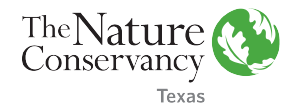



Coalition for
Sustainable Urban Rookeries
March 8, 2023
Bexar County is facing myriad of urban-avian conflicts caused by a growing population of urban and suburban colonial waterbirds and decreased habitat availability. A coalition of science-based organizations – Audubon Texas, San Antonio Zoo, The Nature Conservancy in Texas, Bexar Audubon Society, and San Antonio River Authority – are joining together to build community-inclusive strategies to address these urban-avian conflicts in Bexar County. Our organizations are fundamentally based in conservation and habitat preservation with different skill sets regarding the environment. Together we seek to offer interdisciplinary guidance on how to protect the environment as well as preserve the cultural fabric of our community.
Urban bird rookeries consist of species of birds referred to as colonial waterbirds, birds that gather in large groups or colonies during nesting season. Species found in urban rookeries can include seabirds (gulls, terns, cormorants, pelicans) and wading birds (herons, egrets, ibises). Urban rookery species common to San Antonio may include Great Egret, Snowy Egret, Yellow-crowned Night-Heron, Double-crested Cormorant, and the Neotropic Cormorant. But by far, the most common species is the Cattle Egret, a bird originally from Africa whose range has expanded enormously in the last 50 years.
Enjoying birds in urban environments creates opportunities for understanding nature, supports environmental stewardship, and also drives economic benefits for the communities. In urban environments bird populations and humans can live in close proximity. When natural habitats that support colonies of breeding birds in rural areas are lost to development and land use change, bird colonies may move to urban and suburban habitats such as parks or residential neighborhoods. When this happens urban-avian conflicts can arise.
The urban-avian conflict in Bexar County has come to a head most recently in Brackenridge Park with a Cattle Egret rookery. The impacts have been stark — current locations of urban rookeries have negatively impacted water quality in the San Antonio River, caused the closure of playgrounds and structures at the park, and are competing with native bird species for food and nesting resources. This conflict has also impacted the San Antonio Zoo, forcing a nine-month closure of the Kronkosky’s Tiny Tot Nature Spot, creating areas unusable by guests/staff due to unsanitary conditions resulting from bird-droppings, and threatening endangered species which are cared for by the zoo with transferable diseases.
This is not a short-term problem and it is not unique to San Antonio. Prior attempts to mitigate rapid urban rookery growth have not had sustained success. Other metropolitan areas in Texas like Dallas and Houston have experienced overpopulated Cattle Egret rookeries in residential areas. In San Antonio, the rookeries are currently located in parks, but as their population grows, urban rookeries may expand to neighborhoods and along the Riverwalk.
Our coalition is seeking a balance between the wellbeing and habitat availability of local wildlife populations, as well as our river’s water quality, and the community’s public health and quality of life.
Long-term solutions are only attainable if all stakeholders are at the table. We are developing a process to build science-based solutions and community-inclusive strategies for a sustainable urban rookery management plan that benefits people and nature. We invite the community to share their questions, ideas, or concerns on this new public platform as we work together to address the urban-avian conflict in Bexar County.
Audubon Texas, San Antonio Zoo, The Nature Conservancy in Texas, Bexar Audubon Society, and San Antonio River Authority

Urban-Avian Conflicts Threaten San Antonio's River Quality and Endangered Species
The current locations of urban rookeries have negatively impacted water quality in the San Antonio River, and the increased presence of bird feces in and around the river can cause various health and environmental concerns. Additionally, the competition for food and nesting resources between native bird species and urban rookery species further threatens the habitat and survival of native bird species. This conflict has also posed a threat to endangered species cared for by the San Antonio Zoo, as the transferable diseases from urban rookery species can be fatal to these animals.

The Coalition for Sustainable Urban Rookeries Aims to Balance Wildlife and Community Needs
The Coalition for Sustainable Urban Rookeries in Bexar County understands the significance of finding a balance between the needs of local wildlife populations and the community’s public health and quality of life. We are seeking to develop science-based solutions for sustainable urban rookery management that benefits both people and nature.
We believe that enjoying birds in urban environments creates opportunities for understanding nature, supports environmental stewardship, and also drives economic benefits for the communities they co-exist in. Species found in urban rookeries can include seabirds and wading birds, and some species that are common in San Antonio include the Great Egret, Snowy Egret, Yellow-crowned Night-Heron, Double-crested Cormorant, Neotropic Cormorant, and the Cattle Egret.

Long-Term Solutions Sought for Sustainable Urban Rookery Management in Bexar County
Our coalition recognize the importance of balancing the well-being of local wildlife populations, river water quality, and the community's public health and quality of life.
We understand that overpopulated urban rookeries are not a short-term problem and not unique to San Antonio. Other metropolitan areas in Texas have experienced similar issues, and prior attempts to mitigate rapid urban rookery growth have not had sustained success.
In the absence of a holistic approach to addressing urban-avian conflicts in Bexar County, our coalition has compiled a science-based set of strategies and guidelines to initiate a conversation toward solutions.
The objective is to draw colonial nesting wading birds away from urban parks or neighborhoods by creating multiple attractive rookery environments far from urban centers, airports, etc.
Rather than simply deterring birds from nesting in urban areas, we will bring our science and wildlife management expertise to identify and promote the development of criteria and potential locations for alternative rookery sites that could be attractive, safe and sustainable for colonial waterbirds as well as other native migratory birds. By identifying general locations along their migratory paths, we can take a science-based approach to identifying conditions that will provide alternative nesting locations and entice the birds to explore other desirable nesting locations, reducing the population density in primarily urban spaces.
Criteria:
- Located away from urban centers, airports, and other human development
- Year-round water source
- Desired shoreline with a gentle slope to deeper water
- Adequate food sources nearby (aquatic: fish, crustaceans, amphibians)
- Sufficient tree canopy to support vertical stratification of nesting sites to reduce competition for available space and territories.
- Diversity of materials to build nests (Egrets may use sticks and twigs while Cormorant species use greenish twigs with leaves for their nest building)
- Protection from predators and adverse environmental conditions
- Consistent resources for nesting, breeding, foraging, and feeding
Desired Attributes:
- Artificial nesting structures (ANS) to simulate islands and provide structures for nesting
- ANS will have multiple platforms to support nests
- Branch height at least 4m or higher, over water
- Decoys and recorded sound calls may be used to attract scout birds and encourage nesting
This will help develop a more targeted approach to managing the rookeries and prevent overpopulation from causing negative impacts on water quality, native bird species, and the community. By considering the natural balance of the ecosystem, we can develop strategies that will support the health of all wildlife populations.
We will seek input from indigenous communities to ensure that our strategies reflect cultural connections to the natural environment. By incorporating traditional ecological knowledge, we can develop approaches that are respectful and inclusive of all members of the community.
By working collaboratively with a range of stakeholders, including local organizations and community members, we believe that we can create a more harmonious and resilient environment for both wildlife and people. We are dedicated to developing interdisciplinary guidance on how to protect the environment and preserve the cultural fabric of our community.
We aim to create a platform where the community can share their ideas, questions, and concerns, as we work together to address the urban-avian conflicts in Bexar County. Our coalition believes that sustainable urban rookery management plans can only be achieved if all stakeholders are at the table.
Stay Informed: News and Resources
We’ve curated a list of news articles that provide updates on the current state of the urban-avian conflict, as well as the progress and actions being taken to address the issue.
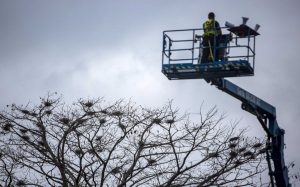
Too much poop: San Antonio shoos federally protected birds from Brackenridge nests – San Antonio Express-News
The city looks to push them to a part of the park where they’ll muck up the waters less. [from San Antonio Express-News]
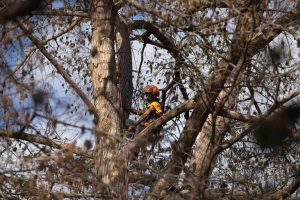
San Antonio is again shooing migratory birds from Brackenridge Park – San Antonio Report
San Antonio wants to keep migratory birds from nesting in certain parts of Brackenridge Park, as their feces can be dangerous to humans and aquatic
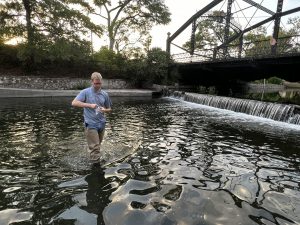
River Authority: Brackenridge Park's poor water quality linked to birds – San Antonio Report
San Antonio River water quality near Joske's Pavilion has suffered in recent years, and river scientists believe the birds could be a reason. [from San
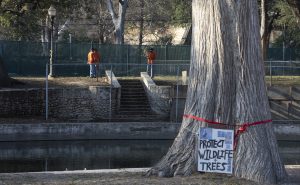
Is San Antonio a 'Bird City' or a city at war with birds? – San Antonio Report
Attempts to discourage birds from nesting in Brackenridge Park have been tied to a 2017 bond project to restore historic structures there. [from San Antonio
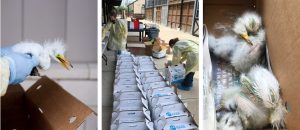
Injured great blue herons, egrets rescued from Houston-area property after nesting area destroyed, SPCA says – Houston Chronicle
Seventy-one juvenile great blue herons and egrets are now in the care of the Houston… [from Houston Chronicle]
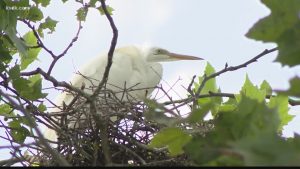
Colony of herons and egrets nests in Central West End – ksdk.com
The birds, which can typically be seen along rivers and lakes, have posted up in the Central West End [from ksdk.com]
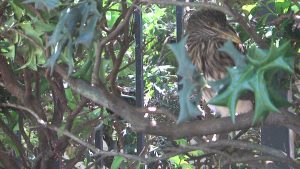
Herons, Egrets Bring Noise, Mess to Sacramento’s Pocket Neighborhood – FOX40
SACRAMENTO — Many people living in the Pocket neighborhood of Sacramento have been dealing with herons and egrets nesting in the area, which have brought

Urban birds: Living with them requires acting responsibly | MinnPost – MinnPost
Living cheek to cheek with bird species means being more careful about how we design our cities and buildings. [from MinnPost]

People can learn to coexist with urban wildlife. Lincoln Park Zoo is showing how. – Chicago Sun-Times
By studying animals in urban habitats, we’re learning not just about them, but also about us, and how our worlds affect one another. The zoo
Join Our Newsletter
Sign up for our newsletter to receive the latest news, updates, and events related to sustainable urban rookery management strategies. Learn about ways you can get involved in supporting the wellbeing of local wildlife populations, river water quality, and the community’s public health and quality of life.
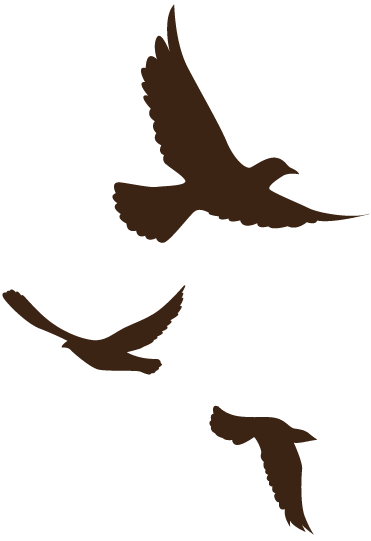
Sustainable Urban Rookery Survey
Please complete the following survey to help guide community-based decisions for managing and producing sustainable rookeries in Bexar County.





Copyright 2023 • Coalition for Sustainable Urban Rookeries

